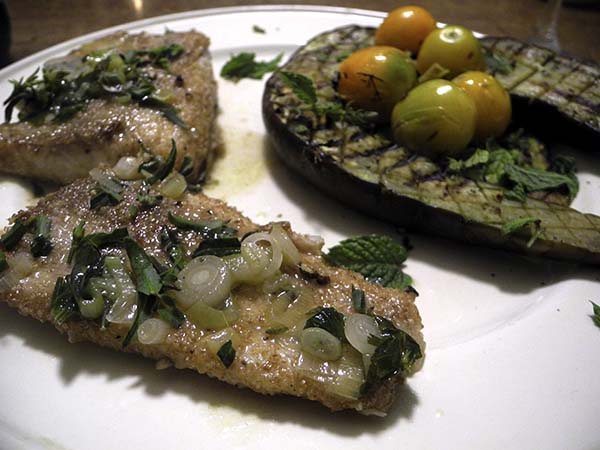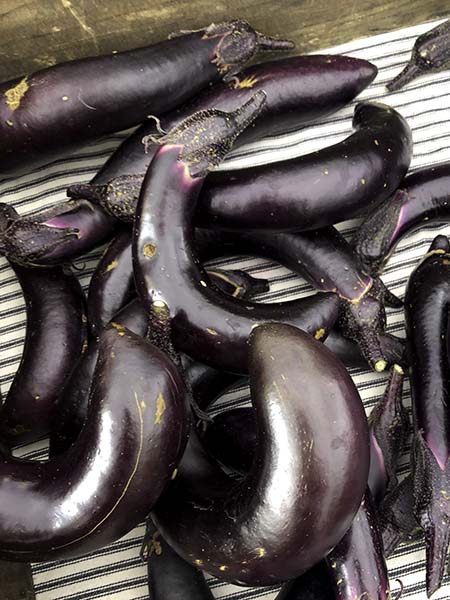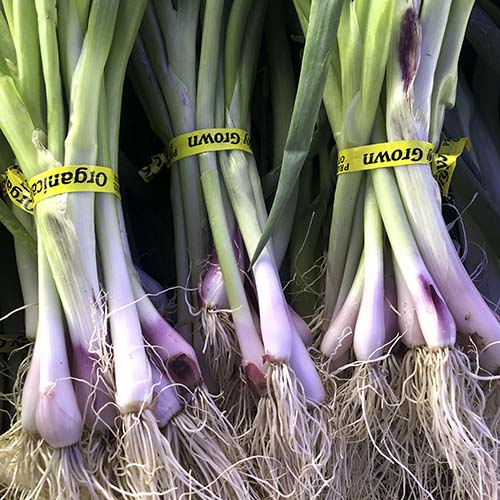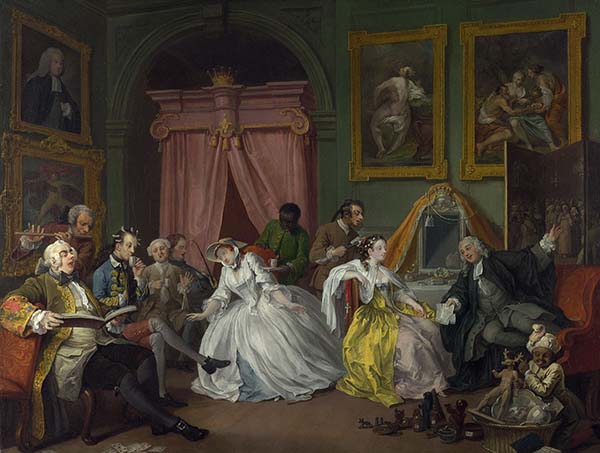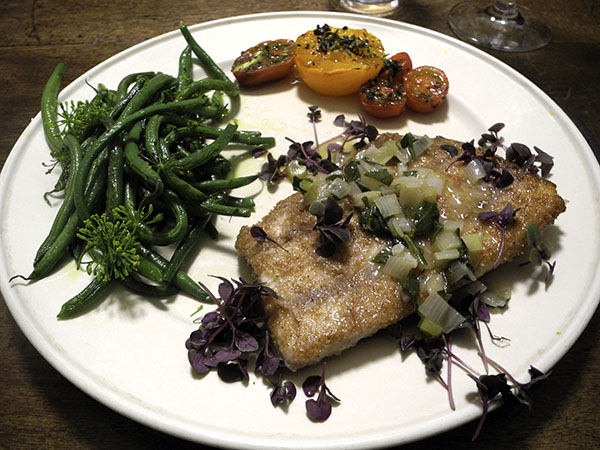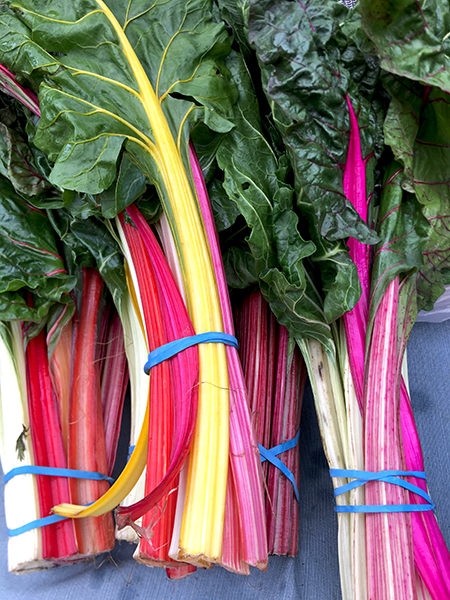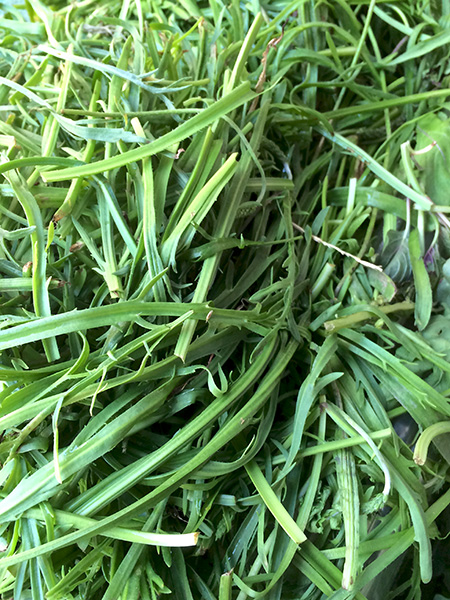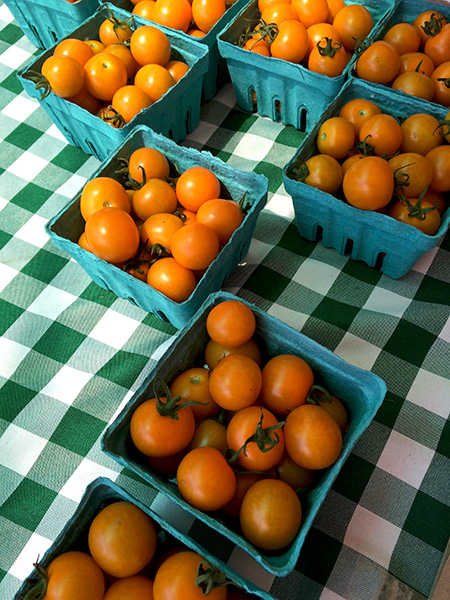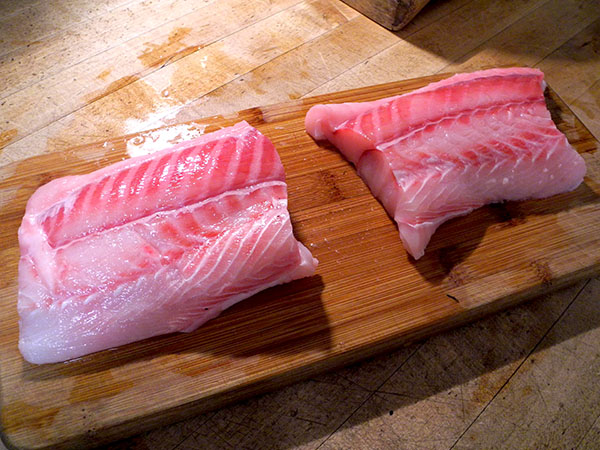
I’m leading here with the ‘before’ picture this time because I think it’s a really good illustration of how I could have been seduced by a fillet from something called a ‘dogfish’ (NOTE: the market prefers to describe it as ‘sand shark’).
The image is of a one-pound fillet, after it had been halved, lying on our kitchen counter yesterday evening.
This is how it went a little later, sitting atop a round plate in an arrangement of a square, more circles, and what looks like a rectangle
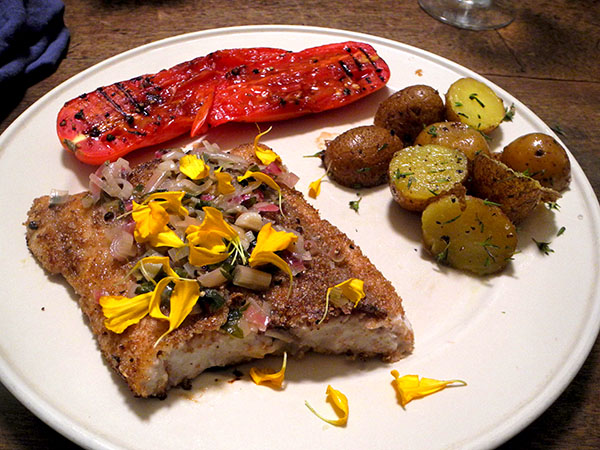
I had never cooked sand shark/dogfish before (‘rock salmon’ in the UK, ‘saumonette’ in France, ‘Palombo’ in Italy). I’m not certain I had ever even eaten it, so when I came across some beautiful, very fresh fillets in a small bucket inside my fishmonger’s iced cases Friday afternoon, I decided it was time I started.
The hardest part of the operation turned out to be researching how to prepare it. I settled on a recipe, described as Italian, and with an Italian name (‘Palombo al vino bianco‘), possessing one of the great virtues of that culture’s cooking tradition: a minimum number of ingredients, to keep from disguising the flavor of the best meat, fish, or vegetables available to the cook.
We were both pretty pleased with the outcome. Barry loved it, and I have only one reservation, about whether I had sautéed the fillet just a little too much, but the recipe, which said how long to cook it, didn’t describe the thickness of the fillet it was dealing with. Since I had absolutely no experience with this fish myself, so I couldn’t draw on my own expertise.
The only way I’m ever going to know is to cook sand shark/dogfish/ground shark/etc. again. I’m sure it’s going to happen.
- one 17-ounce sand shark fillet from Pure Vida Seafood, brought to room temperature, halved crosswise (I’m getting very good at cutting equal halves out of even the most irregular shaped fish or meat), dusted with some local North Country Farms Stone Ground Whole Wheat Flour, shaking off the excess, sautéed in a little over one tablespoon of olive oil inside a large heavy oval tin-lined copper pan above a high flame for about 5 minutes on each side, or until browned, seasoned with sea salt and Freshly-ground Tellicherry pepper, the heat then turned off while a second copper pan was heated over a low to moderate flame with another tablespoon of oil before 2 fresh finely-chopped spring shallots from Alewife Farm were added and cooked until softened, stirring occasionally, followed by one small (or halved full-size) salted and rinsed Italian anchovy, at least a tablespoon of chopped Italian parsley from from Norwich Meadows Farm, and a half cup of Gruet Brut sparkling wine (from an opened bottle that remained from entertaining guests earlier in the evening), the heat increased and the liquid reduced almost completely, then a tablespoon of fresh water added, the sauce seasoned with a pinch each of salt and pepper and poured over the top of the fillet halves, the pan heated over a low flame for a minute or two, the fish served on the plates with a sprinkling of nasturtium flowers from Windfall Farms
- eight German Butterball potatoes from Berried Treasures boiled, drained, dried in the pan, rolled in a little olive oil, seasoned with sea salt and frshly-ground Tellicherry pepper, tossed with chopped summery savory from Stokes Farm
- two long heirloom tomatoes (‘Striped Roman’?) from Eckerton Hill Farm, halved lengthwise, the cut sides sprinkled with sea salt and freshly-ground Tellicherry pepper, grilled face down on an enameled cast iron grill pan for 3 minutes or so, turned over and the rounded side grilled for a little less time, removed, arranged on the plates and brushed with a little balsamic vinegar
- the wine, after we had put aside 2 good table wines, only because they turned out to be unsuitable for the food (what is it about sand shark?), was a Spanish sherry, Lustau, ‘Papirusa’ Light Manzanilla Sherry, from Sherry Lehmann
There was a dessert.
- small oval bowls of Lā Loos ‘Vanilla Snowflake’ goat milk ice cream from Whole Foods Market, drizzled with a sauce I had made from Wilklow Orchards gooseberries
- the music throughout was the album, ‘Unbound’, by the Jasper String Quartet
